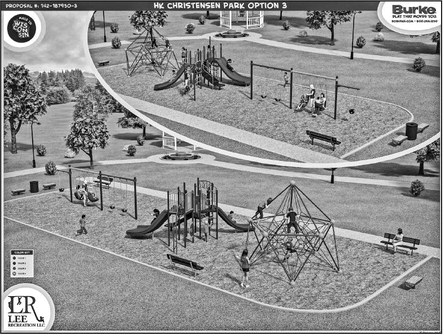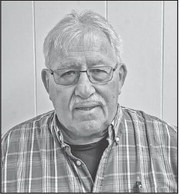Ayon


Continued from page 1
Judge Diehn, who oversaw the 2022 trial, noted that Contreras-Perez’s trial attorney, Claire Longdin, had filed a pre-trial motion asking that statements attributed to Ayon by friends and co-workers be precluded as testimony, as they would violate her client’s constitutional right to confront his accuser. The judge ruled on her motion the month before the trial began.
“The court expressed clear concern about the difficulties of conducting analysis of a large number of potentially hearsay statements mid-trial,” Judge Diehn wrote. “However, without an enumeration of specific statements, the court made a general ruling that any hearsay offered had to meet a hearsay exception and be non-testimonial.”
Judge Diehn first addressed the issue of whether certain statements were “testimonial” in nature, meaning that they were intended “to create an out-of-court substitute for trial testimony.” Four factors are used to determine whether statements are testimonial, including the level of formality when the statements were given, whether the statements were given to law enforcement, the age of the person who made the statements, and the context in which they were provided.
Statements made by two of Ayon’s coworkers were deemed non-testimonial since they were made in “social, non-formal situations,” Judge Diehn wrote. Separate statements made to a Colby-Abbotsford police officer after Ayon’s phone was stolen from her car while parked at Kwik Trip were also considered non-testimonial because they did not directly implicate Contreras-Perez.
Another statement made by one of Ayon’s co-workers required “closer examination,” Judge Diehn wrote. The co-worker said Ayon had told her that she knew what Contreras-Perez “was capable of,” and if something were to happen to her, it was likely him who was responsible.
Longdin, the defense attorney, objected to the statement, and Judge Diehn sustained the objection, but Longdin did not make a motion to strike it from the record because she did not want to draw attention to it. Judge Diehn said the statement alone was “unlikely to have contributed to the jury’s verdict,” since plenty of other admissible evidence was introduced to establish Ayon’s fear of Contreras-Perez.
Judge Diehn went on to to analyze several statements made at trial to determine if they met one of two statutory exceptions for hearsay. The “recent perception” rule allows comments made by Ayon about then-recent events “without the contemplation of pending litigation.” The “state of mind exception” allows for comments that establish Ayon’s emotional and mental state, but not the events which may have led to that state.
The judge considered six groups of statements made by witnesses and determined that three of them were “improperly admitted” in a way that prevented Contreras-Perez from getting a fair trial.
First were statements from Ayon’s friends and co-workers indicating that if anything ever happened to Ayon, Contreras-Perez would be to blame. Judge Diehn ruled that the prosecution used at least one of those statements in its closing argument to imply that Contreras-Perez committed the alleged crimes, which goes beyond the hearsay exceptions.
Secondly, the judge determined that testimony regarding Contreras-Perez’s alleged threats against Ayon were inadmissible based on previous court decisions. Several statements that Contreras-Perez knew how to make Ayon “disappear” were ruled inadmissible.
Lastly, Judge Diehn ruled that hearsay statements from Ayon that she was afraid of Contreras-Perez because he threatened her and treated her badly were inadmissible.
Prosecutors had argued that, even if some of the statements were inadmissible, the jury still would have found Contreras-Perez guilty based on all of the other evidence presented. Judge Diehn agreed that many of the hearsay statements “did not contribute to the verdict.”
“These statements contributed a small portion of the evidence presented, and none of the statements were of a nature that a jury would reasonably find them compelling,” he wrote. “The state presented other, significant evidence on these same issues.”
However, he said statements indicating that Contreras-Perez had threatened to kill Ayon and knew how to “make her disappear” were “extremely persuasive evidence in the context of a homicide trial in which the body was never found.”
“Erroneous admissions of the statements very likely contributed to the jury’s verdict,” Judge Diehn wrote. “Therefore, the error was not harmless.”
Judge Diehn’s decision also addressed three other reasons that Grotelueschen provided for vacating her client’s conviction, including questions as to whether the alleged crimes occurred in Clark County, whether Contreras-Perez was unfairly implicated because he invoked his right to remain silent and whether he had inadequate legal counsel.
Testimony by Ayon’s friends and co-workers was not the only evidence presented at trial. Prosecutors also used cell phone data to track Contreras-Perez’s movements at the time of Ayon’s disappearance, showing that he was likely in the area of Unity, where she was last seen by a friend.
The prosecution also called attention to the defendant’s movements after the disappearance. Just a couple days after Ayon went missing, Contreras-Perez left the farm where he had been working for 18 years and never returned. He left just a few hours before police investigators arrived to question him.
Contreras-Perez remains in jail on a $1 million cash bond, and no further court dates have been set at this point, according to online records.
Cassandra Ayon




